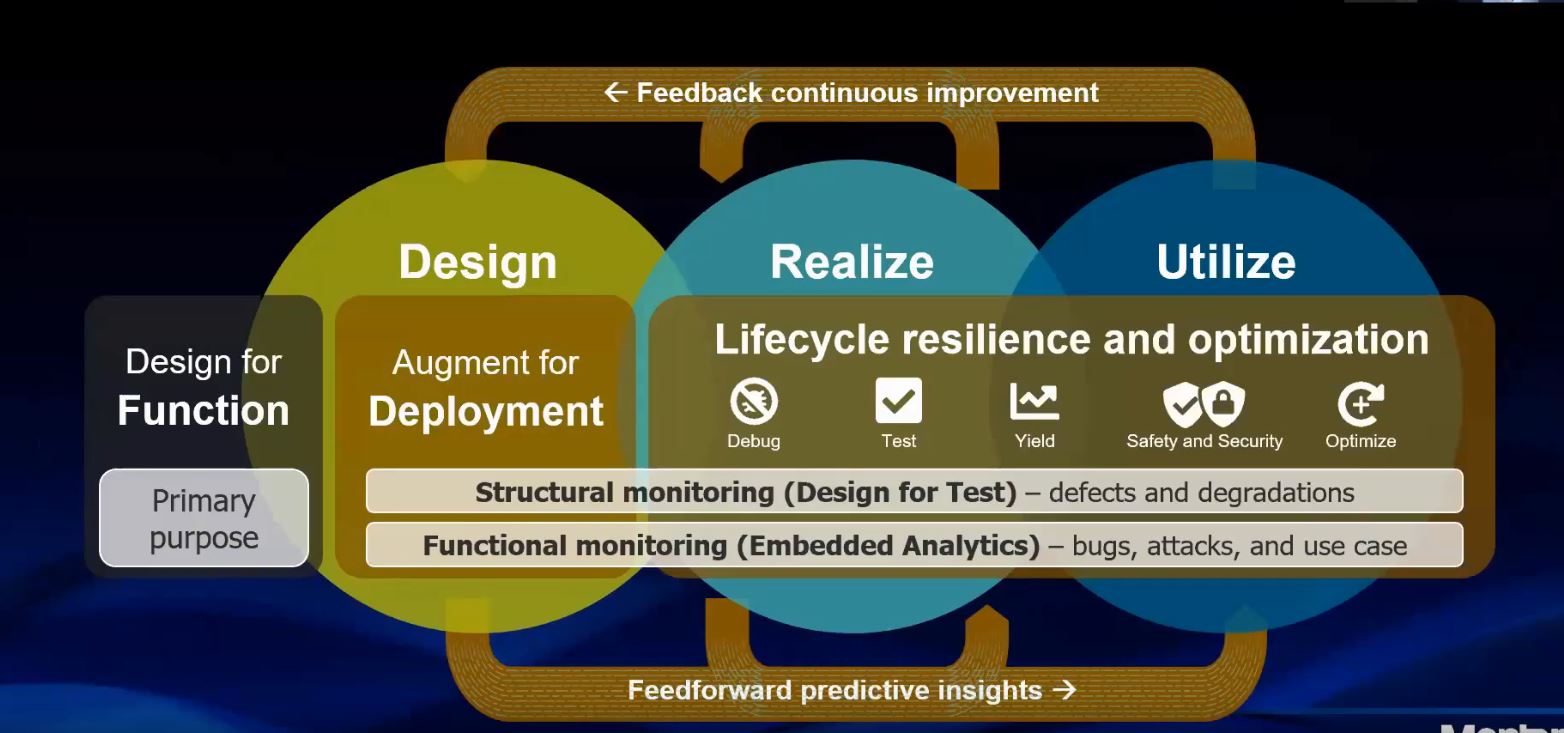Video: ITC India 2020 keynote—Test community can take on silicon lifecycle challenges

The role of test is expanding from its traditional role into one that includes managing the entire silicon lifecycle. To ensure that ICs work safely and as expected throughout their operational life, the industry needs to expand from production test to a model that includes ongoing monitoring for defects, degradations, bugs, attacks, and use cases.
At the 2020 International Test Conference in India, Brady Benware, vice president and general manager for the Tessent Silicon Lifecycle Solutions at Mentor, a Siemens Business, delivered a keynote address about the expanding role of test in addressing silicon lifecycle challenges. Benware says the test community is the key to tackling silicon lifecycle challenges.
Watch the 40-minute video of Benware’s keynote: Silicon lifecycle challenges and the expanding role of test
Benware starts with the premise that a growing number of ICs produced today are deployed in complex and deeply connected systems, so they must consider not just manufacturing test, but ongoing structural and functional monitoring of the device in the field. This “silicon lifecycle” is a key factor for ICs that need to operate in the context of smart city sensors, autonomous cars, etc. A blue screen on your laptop is inconvenient, but for these deeply connected systems, failures can be dangerous.
What does this mean for IC test? It has forced the role of test to greatly expand in recent years beyond the traditional test challenges of new process technologies and new design architectures, as seen in SoCs for AI and machine learning. The new factors today relate to use cases—how and by whom the electronics are used. Autonomous driving, smart cities, military, avionics, nuclear, medical devices, data center, and cloud processing – all these are parts of our modern human experience that demand functional safety, resilience, security, reliability, and circuit aging.
Another test challenge in large, modular designs is how to allocate test bandwidth, scan channels, etc. to each core. Doing hierarchical DFT saves more test time than any other single technique. However, the modular designs and hierarchical DFT forces designers to make upfront decisions about the test resources that might not be optimized. to allocate to each core. Benware says this test challenge is addressed by using programmable bandwidth through a streaming scan network. We are on the precipice of a new area in scan test with programmable bandwidth. Benware describes how this capability enables additional compression and minimal planning and integration effort.
Benware discusses the use of high-speed IOs (SERDES) to drive test data to effectively manage test for complex chips.
For the on-going device monitoring, as seen in automotive ICs, test is integrated into the design as a comprehensive safety subsystem. It includes safety mechanisms, a control network, and hardware and software management. The world of test and the world of lifecycle management is already converging in designs that have to meet functional safety requirements. Innovations in test for lifecycle management include new LBIST that can detect faults faster and also reduces chip aging. A more efficient logic BIST for lifecycle management is called Observation Scan Technology (OST), and it is helping designers of automotive chips reduce in-system test time (DTTI) and area overhead by capturing circuit responses not just during a capture cycle, but also during the shift cycles.

But security and optimization challenges require more than just structural monitoring, which detects defects and degradations. You also need functional monitoring to detect hardware and software bugs, malicious attacked, use-case surprises, and workload surprises. These two capabilities—structural and functional monitoring—need to come together. Tessent is doing that through the addition of the UltraSoc products for functional monitoring and embedded analytics in June 2020. Benware explains why it makes sense to integrate embedded analytics into the Tessent test product line and the Siemens Xcelerator portfolio.
Benware says that the test community is the right community to tackle the lifecycle challenges and innovate within it’s expanded role. Watch Brady Benware deliver his 2020 ITC India keynote address.


